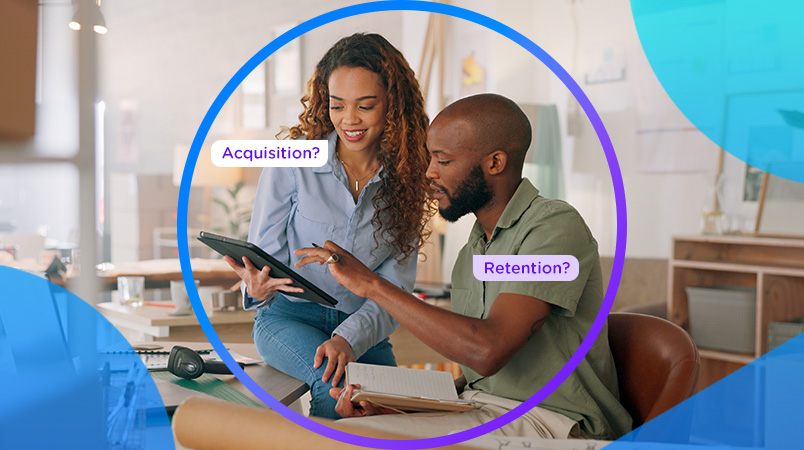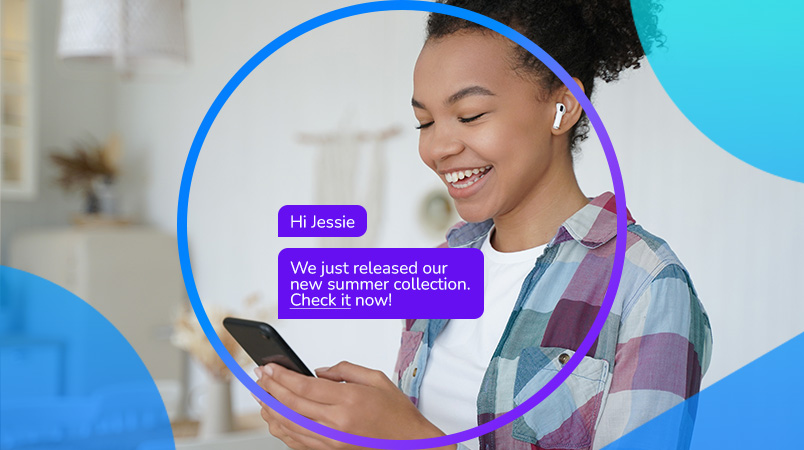From Searching to Booking
No matter how far (or close) in advance your customers book their vacation, the customer journey consists of the same seven stages for every traveler. In each of these stages, there are different opportunities to personalize the journey and improve customer experiences. This could include tailoring recommendations based on recent search queries, providing inspiring content based on previous bookings, or offering tips for ancillaries tailored to the travel party. But as important as adapting the content of your communication is timing it correctly with your (potential) customers.
Approaching your customers when they are not yet thinking about a vacation means you will not be top of mind when they start their search. If information arrives too late, it is no longer relevant, or they may have already booked with a competitor. Poor timing can also lead to frustration, which can negatively impact your brand image or lead to newsletter opt-outs.
In short, if you want to engage customers from the first moment, you need to personalize both the content and timing of your communication.
Personalize Timing? Use Data!
As with personalizing offers and other communications, timing is best personalized based on data. This includes historical booking data, recent search behavior on your website, and external factors such as holiday periods or weather. Of course, manually analyzing all this information is impractical, but with an AI-driven decisioning engine, it’s a piece of cake.
A decisioning engine analyzes data from various sources, past bookings, and data from similar customers, and uses these insights to personalize both content and timing on an individual level.
If data shows that a customer always searches for vacations around the same period each year, the decisioning engine automatically sends the most suitable inspiring content during this period. If a customer always reserves a rental car during the booking process, the decisioning engine shows the best rental car recommendations to the customer during this process. By taking into account both timing and the customer’s preferences and travel type, you achieve maximum relevance, which increases the chances of conversion.
If a customer prefers to book all the extras at the last minute, the decisioning engine saves ancillary recommendations for the moment when the chance of conversion is highest.
Use your knowledge and Experience Wisely
With some decisioning engines, such as Inspire, it is also possible to set up business rules that the algorithm takes into account in its calculations. An example of this is consciously delaying recommendations for ancillaries. Many providers know from experience that this increases the chance of conversion, as with spread-out purchases, you feel like you’re paying less for your vacation than if you were to pay for everything at once.
Another example is determining the optimal timing of an incentive. Perhaps you know from experience that offering a discount to certain target groups works to stimulate bookings, while other target groups are more sensitive to discounts on upgrades. By combining such knowledge and experiencing with data, you achieve optimal relevance for your target groups and maximize the chance of conversion.
Optimal Relevance for Every (Potential) Customer
Of course, as a provider, you also have to deal with customers without a consistent search and holiday pattern and new visitors of whom you have little or no data. This makes predicting needs more difficult, but certainly not impossible. To provide these target groups with a relevant journey, the decisioning engine uses data from peers in combination with recent behavior. These are reliable predictors for content and timing which can be used realtime and automatically.
If a customer reacts differently than predicted to content or if a booking doesn’t happen, the self-learning algorithm automatically adjusts and adapts both content and channel and sending time based on new insights.





